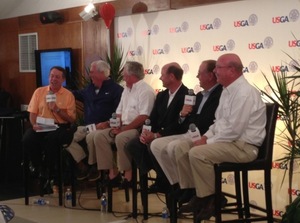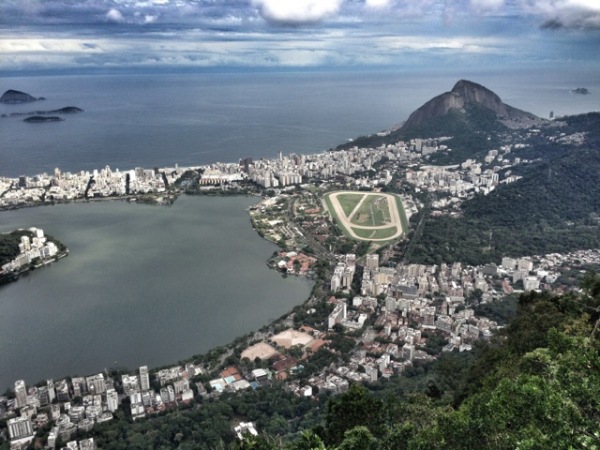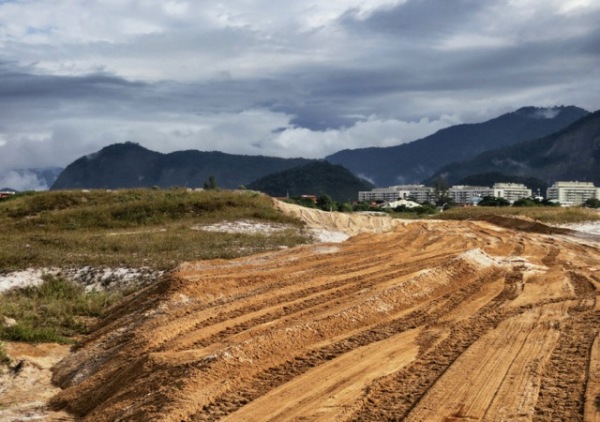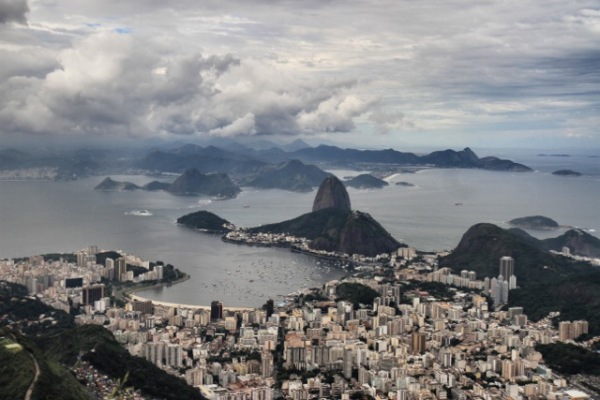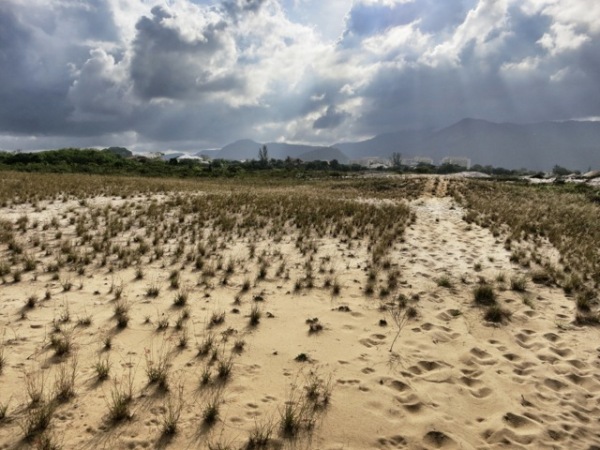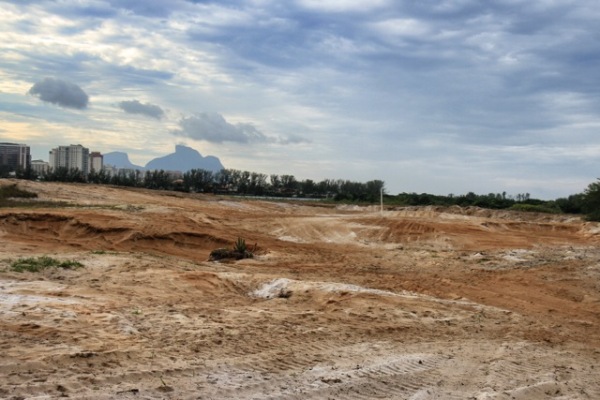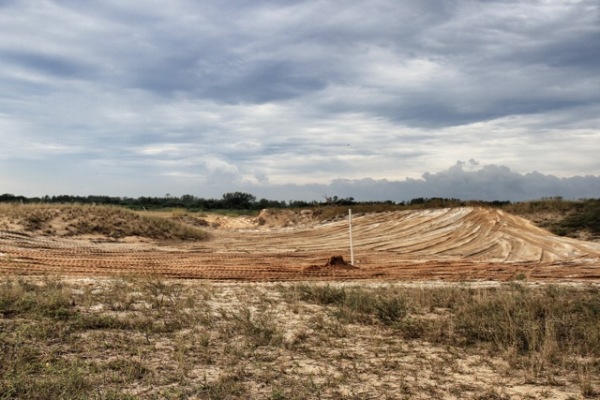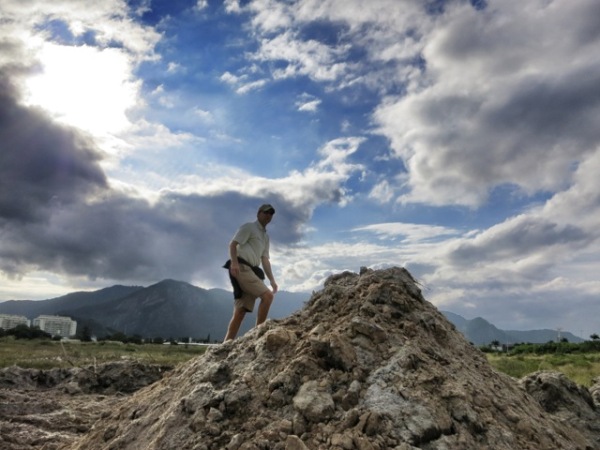I made a visit to Rio last week to see the Olympic golf course in the early stages of construction and with things just now moving ahead down there--albeit still too slowly--I'll share some random thoughts for those interested in Gil Hanse's design, Rio and the Olympic course's potential.
 --The site exceeded expectations in terms of potential for a "great" golf course (very much so) and its setting in Rio (you know you are in Rio but not excessively so). Gil's also done a super job routing what will be a fun, walker friendly course long after the Olympics. It's the type of site a lot of architects would call boring or flattish, but it's far from that.
--The site exceeded expectations in terms of potential for a "great" golf course (very much so) and its setting in Rio (you know you are in Rio but not excessively so). Gil's also done a super job routing what will be a fun, walker friendly course long after the Olympics. It's the type of site a lot of architects would call boring or flattish, but it's far from that.
-By now most have seen the images with sandy scrub, nice plant material and other attributes that give off a "sandbelt" essence. About half the property is set on dunesy land with the initial clearing exposing some tremendously good bumps, hillocks and swales. The "lower" section is on wetlands created after the original dunes were stripped off the property decades ago.
-With the unfortunately slow pace of the project--has at least afforded Gil the chance to gently scrape off the grasses to preserve these features and to isolate plants, cactus and grasses for preservation or transplanting.
- The quality of the ground on these "upper" dunes holes, along with the potential for some attractive (but not excessive) water holes and a few holes playing through a more forested section down by the water, means the routing will have a bit of everything. But mostly it will exude a very open feel, with links and sandbelt elements (if they had condo buildings and stunning mountain ranges in the distance). If given the time to develop the features--a big "if" as the clock ticks and the host countries' lack of urgency continues--re-vegetating the natives and growing in the course properly becomes a concern. However, if this process is allowed to move along at a proper pace, the Olympic course should exude the type of rugged, natural sense that organizers hope to show the world.
- Design discussions were focused on the 6th, 7th and 16th holes. The 6th is a par-3 playing over a dune in similar fashion to the long-lost Maiden at Royal St. George's. The "bowl" the green will sit it in is essentially there, with almost no modification needed. There will be tees from three different angles and a wide array of yardages possible. I can't wait to play this one and even better, watch Olympic golf played on this one-shotter where there is an ideal spot for a grandstand that will allow crowds to react to the shots for the benefit of players on the tee. Throw in the chance to watch the reachable par-5 5th green and 7th tee shots, and it'll be an electric spectating spot on the course.
- Discussed was how this obstructed view 6th hole--sure to be controversial the first time around depending on hole location and tee used and general revulsion by modern players toward any hint of blindness--will fit in the context of the Olympics. But as I preached to Gil, other Olympic sports with playing fields unique to their respective games where local knowlege is rewarded (downhill skiing, luge, road races, etc…), players will merely have to play practice rounds. No more semi-blindness then!
-I never want to hear how Los Angeles can't host another Olympics until LAX is expanded. It looks like Heaven's airport compared to what Rio currently offers. I can't fathom how Rio will handle the number of visitors expected for the games. The 40 minutes I spent in the customs line snaking around the baggage carousel, did, however, allow for the penning of the first lyrics to my new hit single, "The Customs Line From Ipanema."
-Also strange is the lack of any nod to the Olympics in Rio via logos, signage or any other hint that the country is excited to be hosting. It wasn't something I went looking for, but instead realized upon leaving. Not a big deal 3 years out, just weird.
Below are just a few images, including some dirt shots and the required Christ The Redeemer photo and the view from this engineering, construction and spiritual marvel. One the golf side, I've included a view from the 6th tee playing over the existing dune, as well as the approach to the par-4 7th green where you can see some bunkers rough-shaped in.
 Fun anecdote from Randall Mell from Tuesday at Sebonack on the eve of the U.S. Women's Open at the Tom Doak-Jack Nicklaus designed course:
Fun anecdote from Randall Mell from Tuesday at Sebonack on the eve of the U.S. Women's Open at the Tom Doak-Jack Nicklaus designed course:

